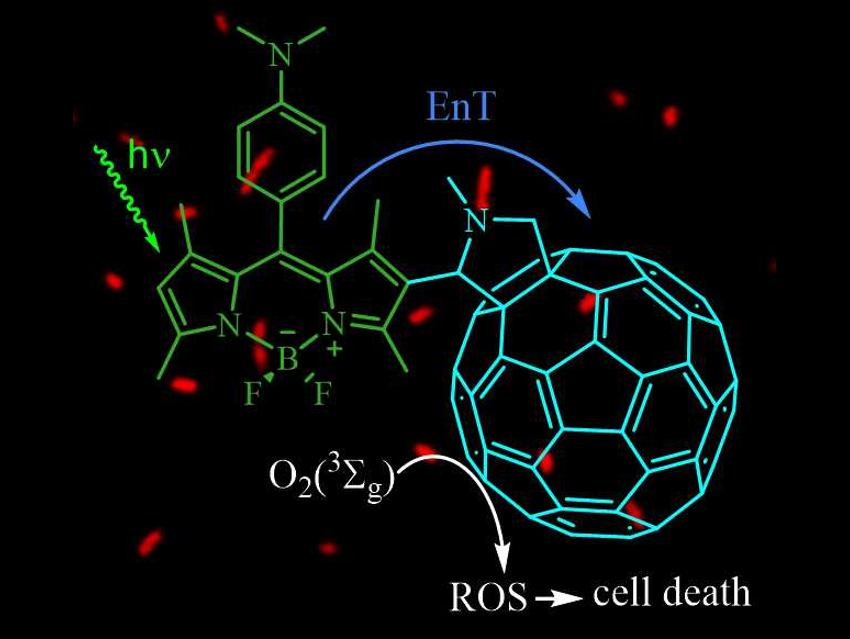The emergence of multidrug-resistant microorganisms is becoming a serious problem in medicine. Photodynamic inactivation (PDI) is a promising therapy for treating microbial infections. A photosensitizer quickly binds to microbial cells. The aerobic irradiation of the microorganism with visible light induces the formation of reactive oxygen species (ROS). They react with the biomolecules in the cells which leads to the cell death. The method requires the development of specific and efficient phototherapeutic agents to attack the microbial cells. Fullerene C60 derivatives are effective photosensitizers.
Edgardo Durantini and colleagues, Universidad Nacional de Rio Cuarto, Cordoba, Argentina, have developed a covalently linked boron-dipyrromethene (BODIPY)–fullerene C60 dyad for use as a phototherapeutic agent in PDI treatments. The material consists of a visible-light-harvesting antenna (boron-dipyrromethene) attached to an energy- or electron-acceptor moiety (C60).
The team used this phototherapeutic agent Staphylococcus aureus and Escherichia coli. After 15 minutes of irradiation at physiological pH, the team observed a strong decrease in cell survival (>99.997 %) for S. aureus. Similar results were obtained for E. coli after 30 min of irradiation. According to the researchers, their results demonstrate that the light-harvesting-antenna effect of the BODIPY unit combined with the proton-activated photodynamic effect can be used to efficiently inactivate bacteria.
- Light-Harvesting Antenna and Proton-Activated Photodynamic Effect of a Novel BODIPY–Fullerene C60 Dyad as Potential Antimicrobial Agent,
Maximiliano L. Agazzi, Javier E. Durantini, Natalia S. Gsponer, Andrés M. Durantini, Sonia G. Bertolotti, Edgardo N. Durantini,
ChemPhysChem 2019, 20, 1110–1125.
https://doi.org/10.1002/cphc.201900181




